And Then There Were Three: Belgium’s Race for the 2030 European Capital of Culture
In 2030, a Belgian city will be named European Capital of Culture alongside a city in Cyprus. The next few months will be exciting for Leuven, Molenbeek and Namur, the three cities still contending for the title after Bruges, Ghent and Kortrijk were dropped. The verdict will be announced in September 2025.
On 24 October last year, the names of the three Belgian cities that could continue to prepare their candidacy for European Capital of Culture 2030 were announced, in the Royal Library in Brussels. In the days leading up to this, teams from Ghent, Bruges, Kortrijk, Leuven, Namur and Molenbeek had taken turns defending their projects to the twelve-member jury, which is made up of two Belgians and ten foreigners, appointed by various European institutions.
The event in Brussels was much like the announcement of competition or exam results. The delegations were nervous. The Dutch chairman of the jury, Jelle Burggraaf, listed the six criteria by which the jury would assess the candidates: Does the project contribute to the city’s long-term cultural vision? What is the European dimension? What about the cultural and artistic content? Does the city really have the capacity to deliver? What will the reach be in terms of the local population and civil society? What about the financial and organisational management of the project? Burggraaf had fun raising the tension even further. He stretched out his introductory speech with an extra joke, ‘accidentally’ dropped the envelope containing the winners’ names, and then took what seemed like an eternity to tear open the envelope.
What is striking for 2030 is that no link has been made to Belgium’s 200th anniversary
The advantage of the six criteria and the competition is that cities have to do their absolute best to involve their cultural institutions in the project, make links to other social sectors, enter into collaborations with surrounding municipalities or other cities, let ideas and themes mature and turn them into a coherent story. It is no longer enough to organise a festival year with a programme featuring all kinds of major international artists. Focusing all the spotlights on prestigious new cultural infrastructure is no good either. What is striking for 2030 is that no link has been made to Belgium’s 200th anniversary, either by the jury or in the project proposals, apart from a single brief sentence in Namur’s dossier.
In principle, small cities have just as much chance as large (capital) cities, but it is not easy for smaller cities to attract international interest. Does anyone know Tartu, for example? It is a city in Estonia that was the cultural capital in 2024.
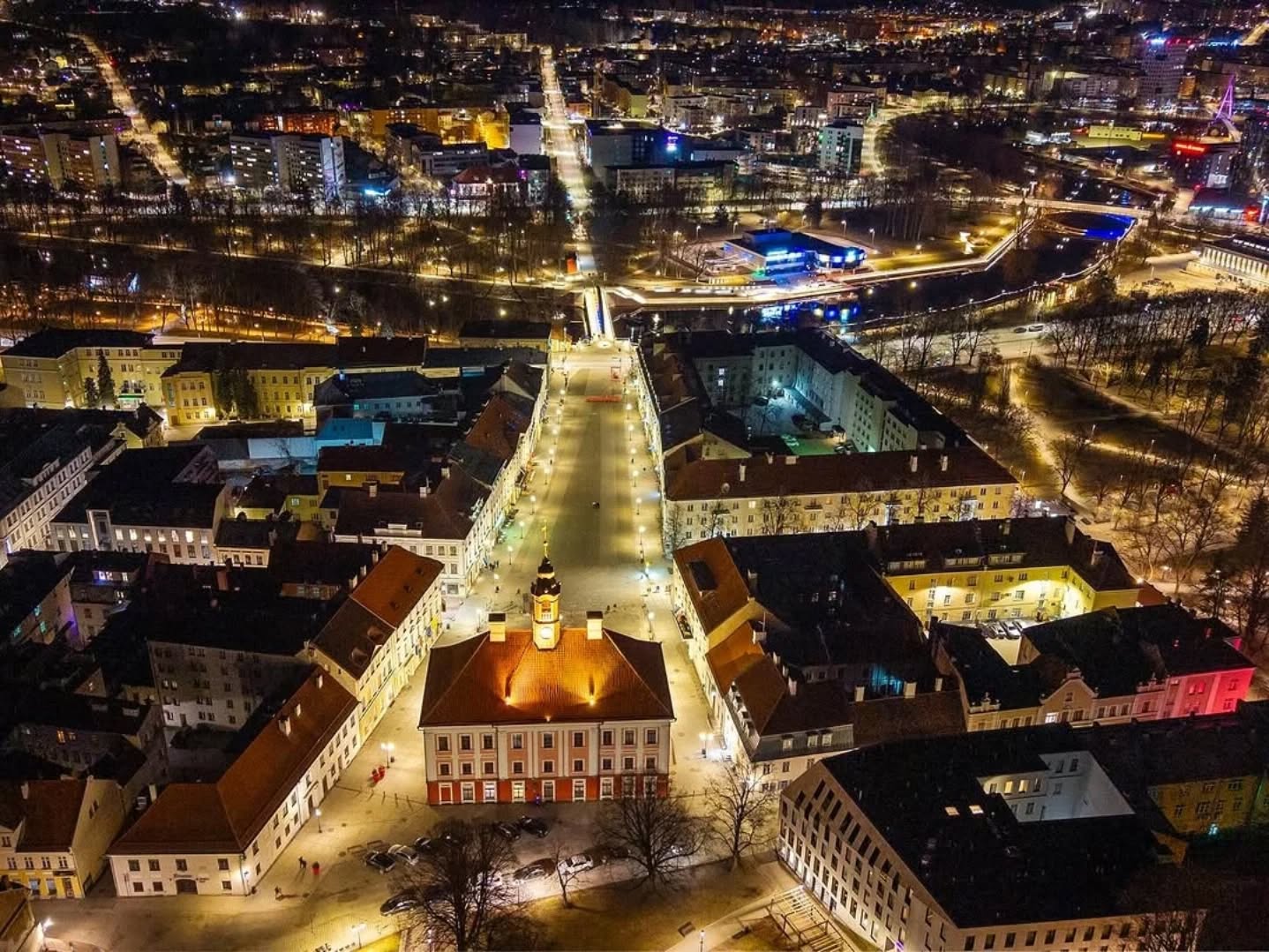 The City of Tartu in Estonia was the European Cultural Capital in 2024.
The City of Tartu in Estonia was the European Cultural Capital in 2024. © Visit Tartu
Although its final report was only published in early December, the jury in Brussels wanted to let it be known that it was impressed by the high quality of the project proposals. And no, they had not neatly selected a Walloon, a Flemish and a Brussels municipality for the sake of political balance. According to the Belgian member of the jury, Annick Schramme, professor of Culture Management at the University of Antwerp, her international colleagues were hardly even aware of the balancing act that Belgium is. And no, Bruges was not eliminated because it had already been cultural capital once, as Mayor Dirk De Fauw suggested.
‘Confluence’, ‘Human Nature’ and ‘Sadaka’
In its detailed report on the Bruges project proposal, The Art of Conversation, the jury expressed criticism that the city gave too little indication of how it planned to deal with the legacy of the 2002 cultural year. More generally, it felt that the project did not sufficiently fit the city’s cultural DNA and its long-term cultural strategy, and that several aspects had not been adequately developed.
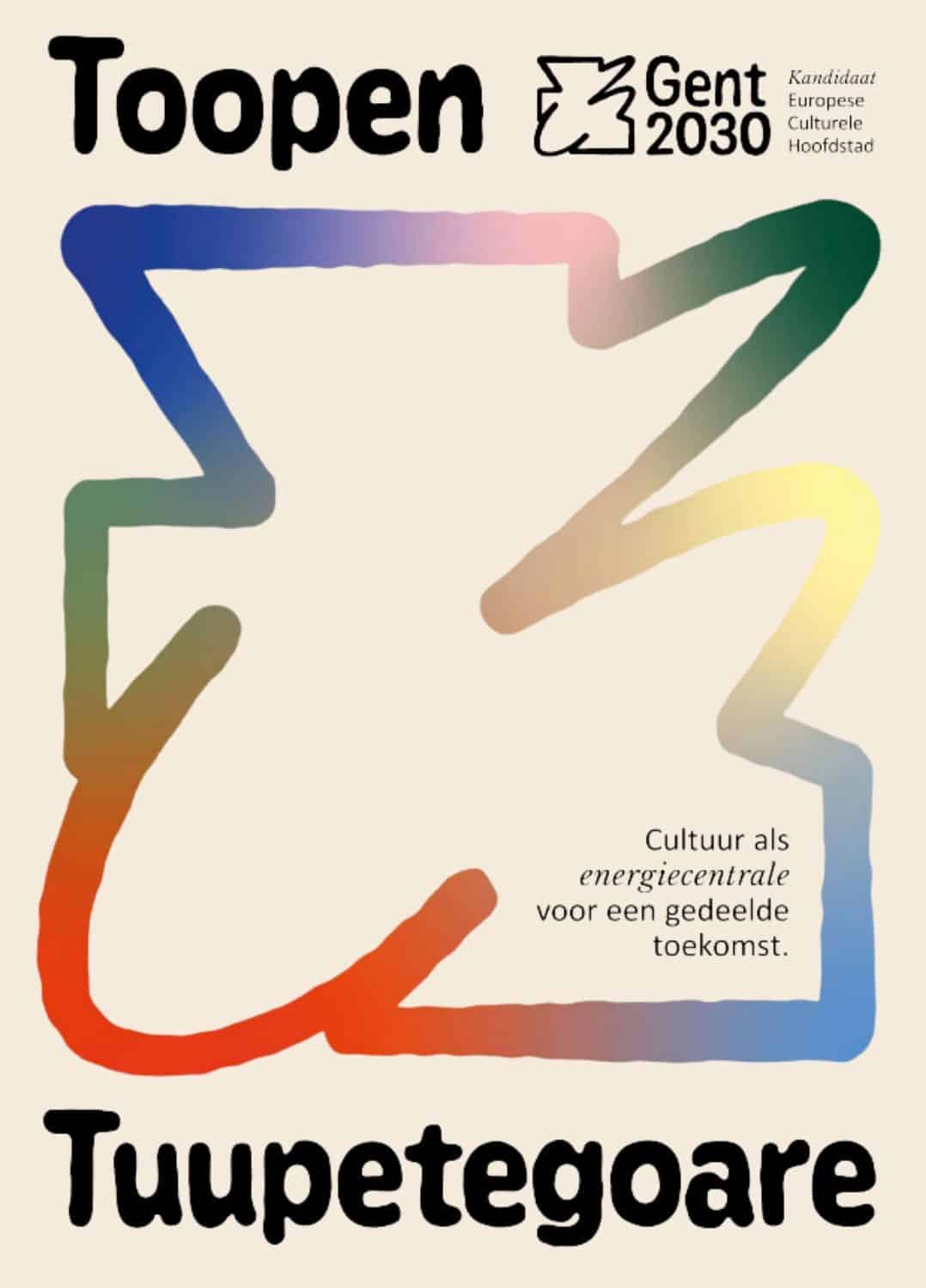 Ghent baptised its proposal Toopen, a fusion of the Greek ‘topos’ (place) and the dialect word ‘tuupetegoare’ (all together)
Ghent baptised its proposal Toopen, a fusion of the Greek ‘topos’ (place) and the dialect word ‘tuupetegoare’ (all together)© Gent 2030
Ghent baptised its proposal Toopen, a fusion of the Greek ‘topos’ (place) and the dialect word ‘tuupetegoare’ (all together). Toopen are open workshops where artists join forces with organisations, experts and citizens. The Ghent team were aware in advance that they were taking a risk by focusing primarily on processes and the conditions that must be met to achieve a vibrant cultural city life. The jury ruled that the proposal should have included more concrete projects.
Kortrijk’s theme was Just Dare – dare to innovate and tackle issues, with a strong emphasis on mental health. In its report, the jury questioned whether something as fragile as mental health could be addressed under that sort of motto. The jury went on to say that the proposal contained some well-developed concepts, but also ‘just ideas’. And that, in less than a year, these might not get further developed.
So, that leaves Namur, Leuven and Molenbeek (for Brussels). All three are municipalities of about 100,000 inhabitants, although they all include a wider region in their candidacy.
Namur is certainly the most surprising choice. It considered itself the outsider in the competition
Namur is certainly the most surprising choice. Besides the major Flemish cultural cities and Brussels, it considered itself the outsider in the competition. The title Territory of Confluences specifically refers to the confluence of the Sambre and Meuse rivers but can also be interpreted symbolically, of course. The link between the digital and analogue worlds is one of the spearheads in the programme, although the jury feels that Namur still has a lot of work to do in this area. The city’s project did get good points for its long-term strategy, its European dimension, the fact that it is well embedded regionally and the cooperation with schools and creative industries.
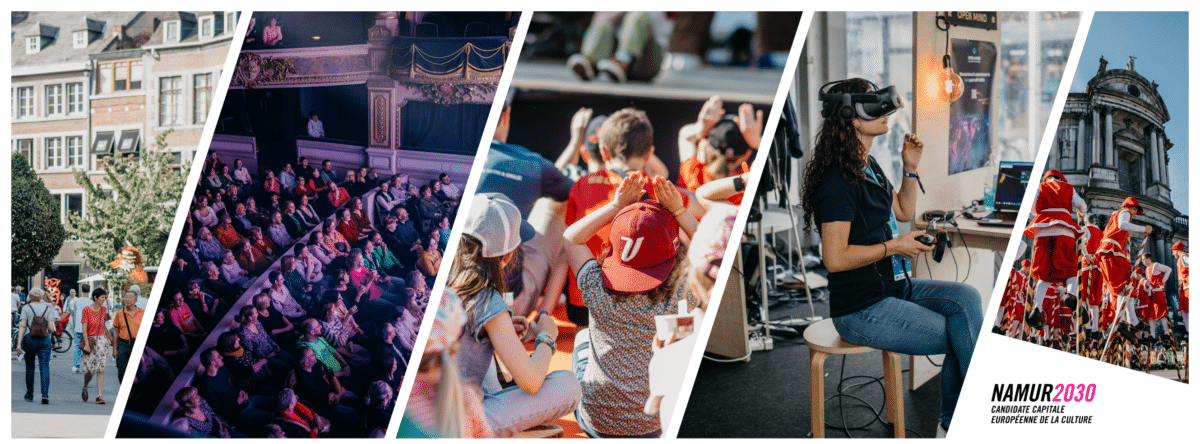
© Namur 2030
Leuven has chosen the theme Human Nature and wants to focus mainly on climate change, social polarisation and innovation. The University city has already planned a lot in the run-up to 2030 – the opening of the new Vesalius museum, the new city festival Body & Soul, the repurposing of the historic town hall as the European House of Democracy, and a new performing arts site in the historic heart of the city. In its report, the jury appears quite enthusiastic about, amongst other things, the ‘fine examples of projects in which local cultural heritage is combined with new and experimental forms of cultural expression’. It also praises the strong European dimension but asks for the city’s 60,000 students to be more involved.
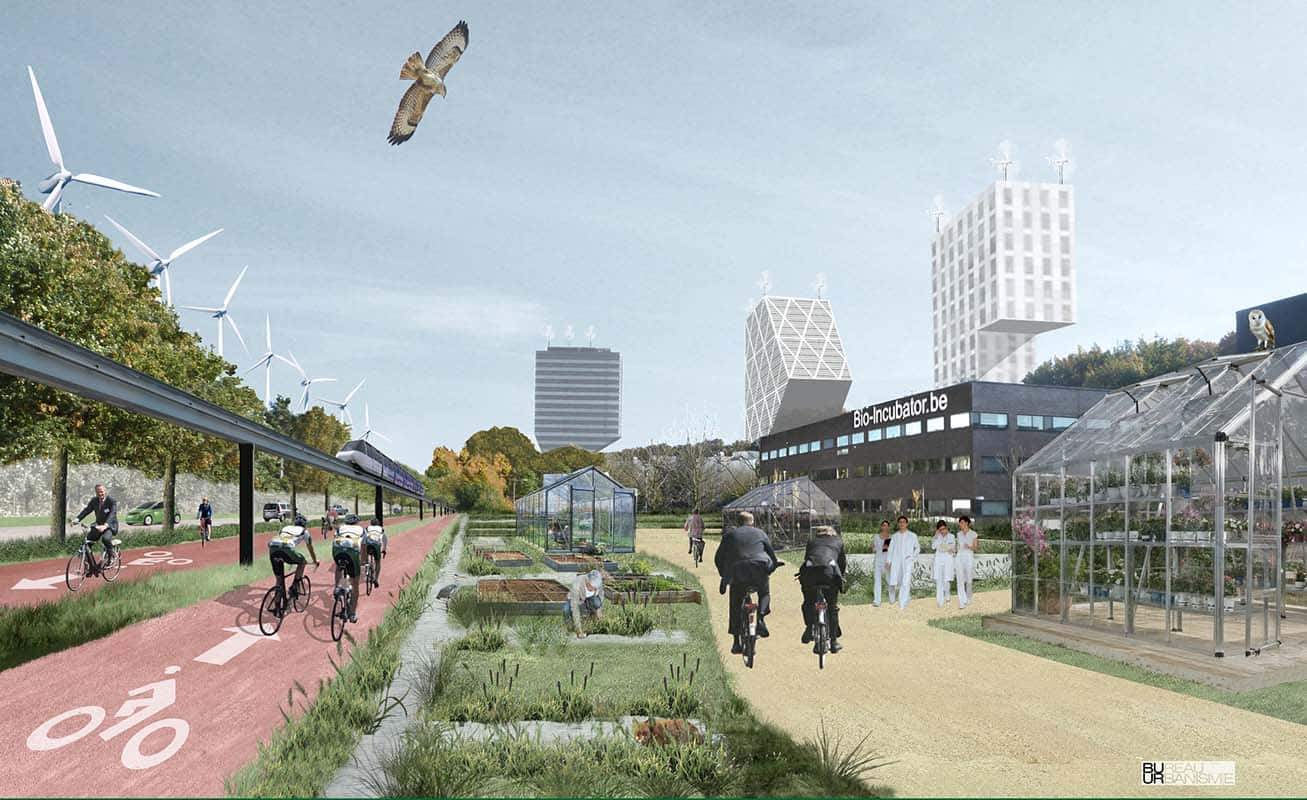
© BUUR / Leuven 2030
The initiative for Brussels’ candidacy came from the Brussels-Capital Region, though it could not submit its own candidacy. Partly because the city of Brussels had the title in 2000, Molenbeek was chosen. The idea for the candidacy arose after the attacks in Paris in 2015 and in Brussels in 2016. As the place where some of the terrorists lived, Molenbeek was labelled a ‘hell hole’ at the time, whereas Molenbeek is also just the home of many young people with a lot of talent. And of many cultural institutions that have been established in the old industrial spaces (but do not always have a strong connection with Molenbeek itself).
Sadaka is the slogan and bottom line of Molenbeek’s candidacy. The fact that sadaka expresses the same concept of ‘selfless generosity’ in very diverse languages (Swahili, Hebrew, Arabic, Urdu) immediately points to the international dimension of the project.
Molenbeek wants to establish links with other similar municipalities in Europe and beyond, places that often have a bad reputation but have a young population with great potential. The other Brussels municipalities are also involved in the programme and would each have their own fortnight. Molenbeek got especially good points from the jury for the way it wants to build bridges between cultures and empower and give a voice to disadvantaged communities.
Melina Mercouri Prize
The three municipalities must now pull out all the stops to finalise their candidacy within just a few months. It certainly helps Namur and Leuven that the parties that form their city councils have remained the same, and they can get straight on with the job. Leuven published vacancies for three new employees for their project team just days after the announcement of the shortlist. It is rather more complicated for the Molenbeek candidacy. Mayor Cathérine Moureaux (a socialist) remains in office, but with a different coalition partner, the communist PTB-PVDA. This far-left party is not particularly popular with the parties negotiating to form a new regional government.
So, where will the money come from? The winning candidate knows that it can count on 15 million euros from the federal government and a grant of 1.5 million euros from the European Commission, referred to as the Melina Mercouri Prize.
Namur will look to the Walloon Region and the Wallonia-Brussels Federation for the largest part of the funding. But they are not very wealthy governments. When Mons was European Capital of Culture in 2015, there was a lot of frustration among cultural partners in other cities in French-speaking Belgium, who saw their subsidies severely cut during that period.
Molenbeek can count on subsidies from several different authorities, but the puzzle will be complicated
Due to Brussels’ complex political structure, Molenbeek can count on subsidies from several different authorities, but the puzzle will be complicated. The Brussels Region would contribute the most, and it is hoped that Flanders would contribute 8 million euros. But there are financial problems here too. The Brussels Region will have to make severe cuts in the coming years, and the impoverished municipality of Molenbeek has just appealed to the federal government for financial assistance. In its report, the jury expressed concern that Molenbeek spends only 4.4 percent of its budget on culture.
If Leuven wins, Flanders will come up with the hefty sum of 30 million euros. This amount will be welcome because there is frustration in Leuven that there is still a great deal of inequality in the distribution of Flemish cultural budgets. The view there is, ‘If you draw an axis from Antwerp through Mechelen to Brussels, 91% of all Flemish cultural resources go to the western side of the axis. The East of the country, including East Brabant, the Kempen and Limburg (which together make up 1/3 of the Flemish population), has to make do with 9% of the budget.
There is a frustration in Leuven that there is still a great deal of inequality in the distribution of Flemish cultural budgets
Speaking of regional divisions, Namur, Molenbeek and Leuven are each in a different region. But they are actually only a stone’s throw from each other, in the centre of the country. For the fun of it, the Leuven team included in their dossier the time it would take to cycle to each of the other cities. They calculated that it would take them 1 hour 38 minutes, at a good speed, to Brussels and 3 hours 14 minutes to Namur, at a somewhat slower pace perhaps, as the climb towards the Meuse Valley and Namur is quite ferocious.

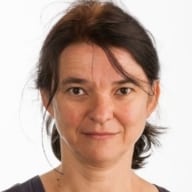




Leave a Reply
You must be logged in to post a comment.